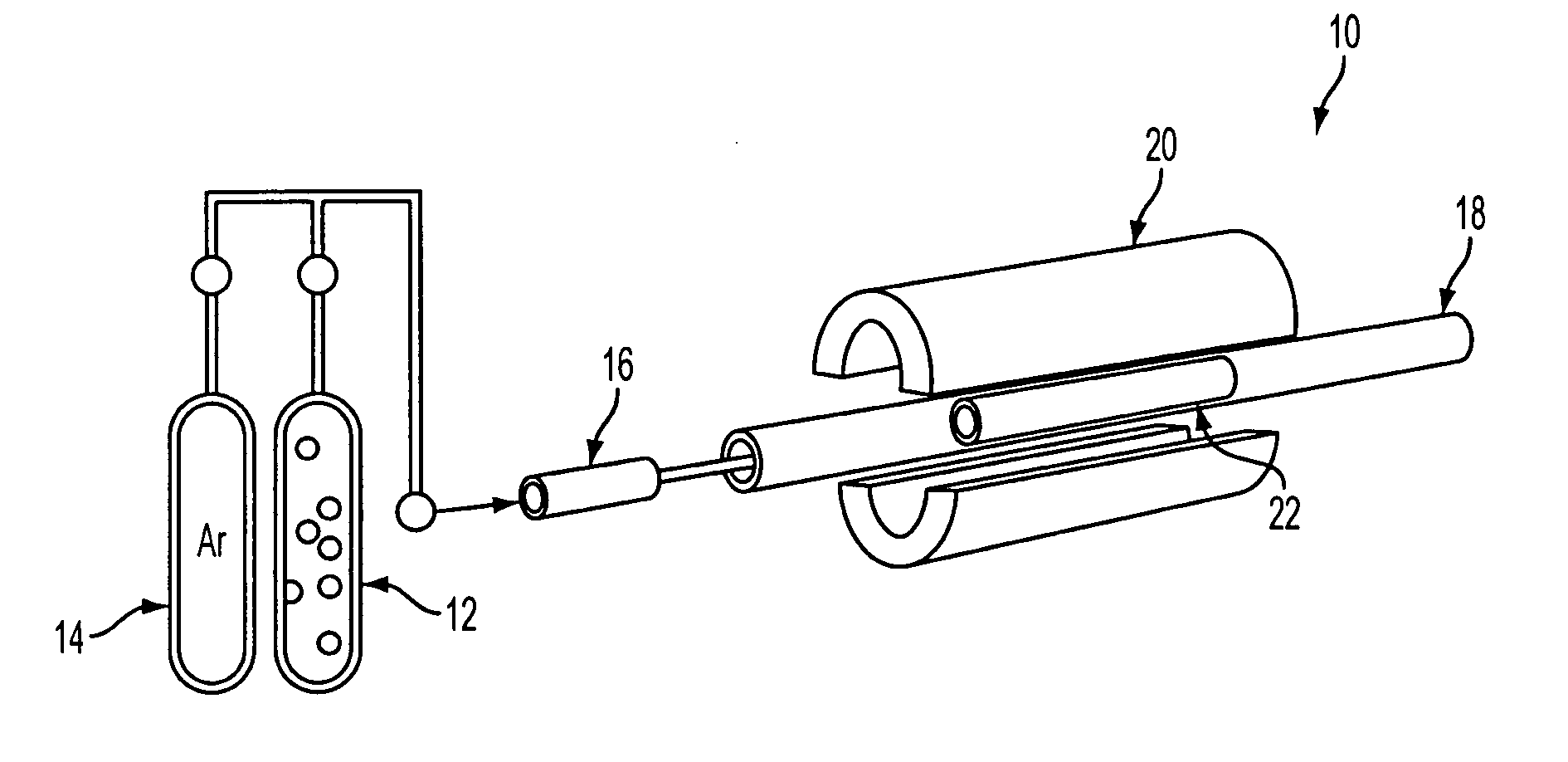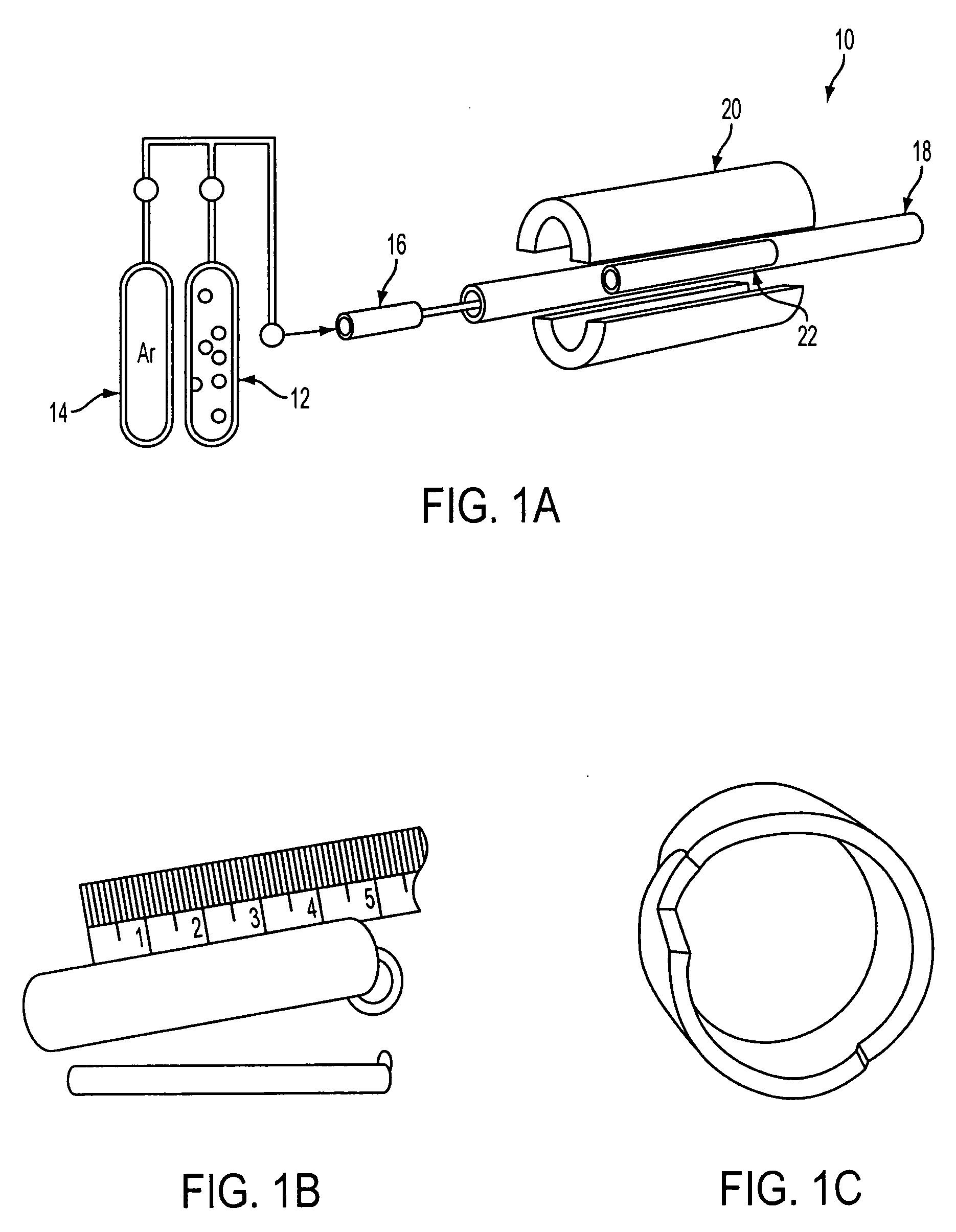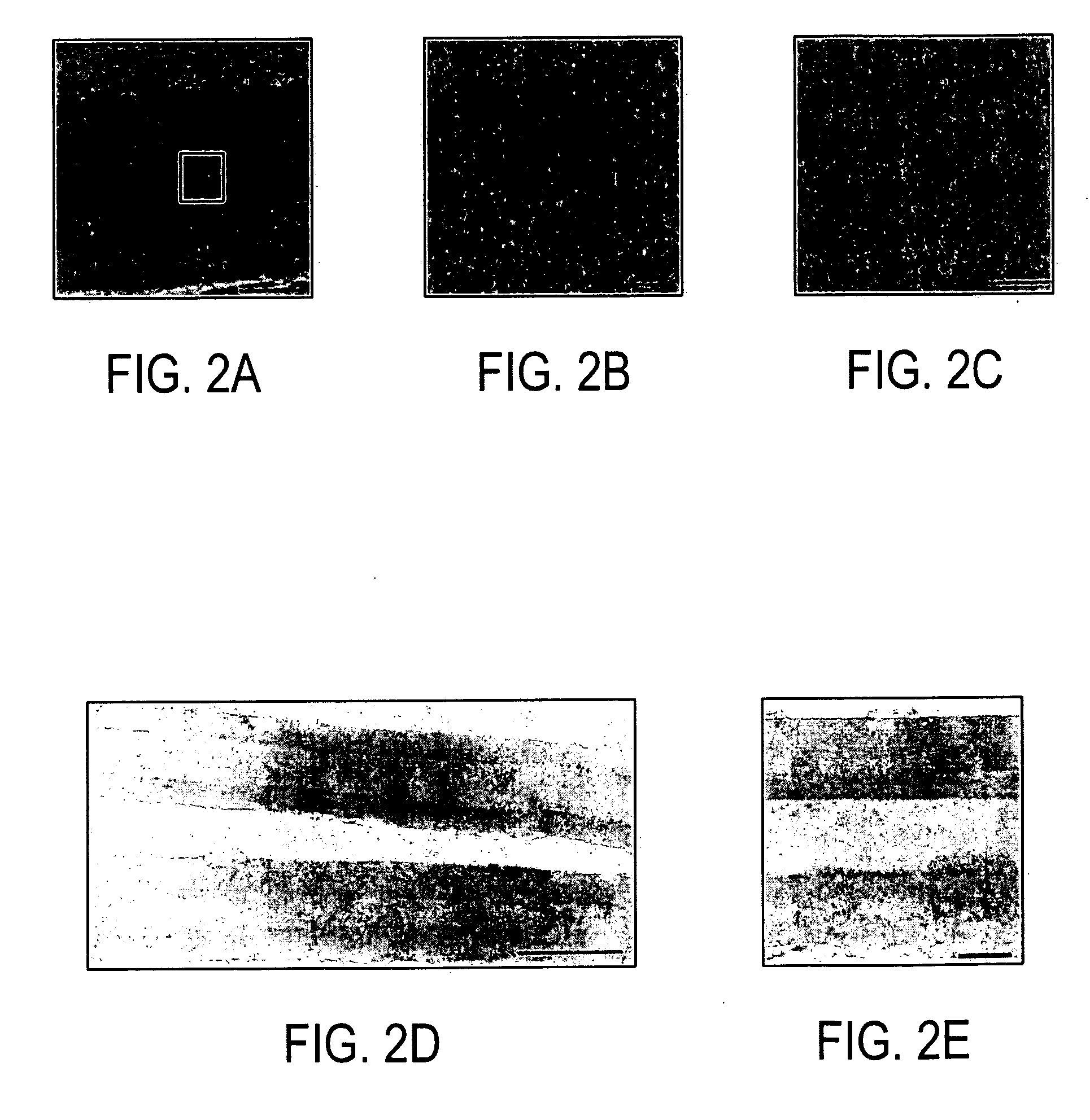Carbon nanotube filter
a carbon nanotube and filter technology, applied in the field of filters, can solve the problems of preventing the reusability of filter filters, and preventing the reusability of filters used for virus filtration
- Summary
- Abstract
- Description
- Claims
- Application Information
AI Technical Summary
Benefits of technology
Problems solved by technology
Method used
Image
Examples
Embodiment Construction
[0019] The specific examples of nanotube filters of the present invention are illustrated in the Figures. However, the present invention should not be considered limited by the structures and methods of the specific examples, which are provided for illustration of the present invention.
[0020] The present inventors have developed a method of making monolithic, macroscopic, nanoporous nanotube structures that are useful for the filtration of fluids, such as liquids. In one embodiment, the invention provides a method of making a carbon nanotube filter, comprising: (a) providing a carbon nanotube source gas and a catalyst gas onto a heated surface; (b) forming a carbon nanotube filter comprising an array of aligned nanotubes containing nanopores between the nanotubes on the surface; and (c) removing the carbon nanotube filter from the surface.
[0021] Preferably, the method of making comprises using a continuous spray pyrolysis method by providing the source gas and the catalyst gas to ...
PUM
| Property | Measurement | Unit |
|---|---|---|
| diameter | aaaaa | aaaaa |
| temperature | aaaaa | aaaaa |
| diameter | aaaaa | aaaaa |
Abstract
Description
Claims
Application Information
 Login to View More
Login to View More - R&D
- Intellectual Property
- Life Sciences
- Materials
- Tech Scout
- Unparalleled Data Quality
- Higher Quality Content
- 60% Fewer Hallucinations
Browse by: Latest US Patents, China's latest patents, Technical Efficacy Thesaurus, Application Domain, Technology Topic, Popular Technical Reports.
© 2025 PatSnap. All rights reserved.Legal|Privacy policy|Modern Slavery Act Transparency Statement|Sitemap|About US| Contact US: help@patsnap.com



